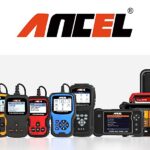When tackling automotive emission issues, especially those potentially linked to Obd2 Code P0134 – indicating a problem with the Oxygen Sensor Circuit No Activity Detected (Bank 1, Sensor 1) – understanding and performing an OBD2 drive cycle is crucial. This process is essential after you’ve addressed any emission-related repairs on your OBDII-equipped vehicle. Think of an OBD2 drive cycle as a comprehensive health check for your car’s emission system, ensuring everything is functioning correctly post-repair.
The primary purpose of an OBD2 drive cycle is to run all the onboard diagnostic tests. It’s a procedure that should be initiated after you’ve cleared any diagnostic trouble codes (DTCs) from your car’s Powertrain Control Module (PCM) memory, or following a battery disconnection. By completing a drive cycle, you effectively set all the system status “flags,” which allows the system to accurately monitor and detect any subsequent faults. This is particularly important when troubleshooting codes like P0134, as it helps verify if the oxygen sensor and related systems are now operating as expected.
To begin an OBD2 drive cycle, it’s important to start with a cold engine. This means the coolant temperature should be below 122 degrees Fahrenheit (50 degrees Celsius), and the coolant and air temperature sensors should be reading within 11 degrees Fahrenheit (6 degrees Celsius) of each other.
Note: Ensure the ignition key is not turned to the ‘on’ position prior to initiating the cold start. Doing so may prevent the heated oxygen sensor diagnostic from running correctly, which is vital when investigating potential issues related to OBD2 code P0134.
Here’s a step-by-step guide to performing an OBD2 drive cycle effectively:
-
Initial Idle: Start the engine and let it idle in drive for two and a half minutes. During this step, turn on the air conditioning (A/C) and the rear defrost. This allows the OBDII system to check the oxygen sensor heater circuits, air pump, and EVAP purge system.
-
Acceleration Phase: Turn off the A/C and rear defrost. Accelerate smoothly to 55 mph (88 km/h) using about half throttle. In this phase, the OBDII system assesses for ignition misfires, fuel trim, and canister purge.
-
Maintain Steady Speed (55 mph): Hold a steady speed of 55 mph (88 km/h) for three minutes. This allows the OBDII system to monitor the Exhaust Gas Recirculation (EGR), air pump, oxygen sensors – critical components for addressing OBD2 code P0134 if it’s sensor related – and canister purge.
-
Deceleration Phase: Without braking or depressing the clutch, decelerate (coast down) to 20 mph (32 km/h). This step enables the OBDII system to check EGR and purge functions during deceleration.
-
Re-acceleration Phase: Accelerate again to 55 to 60 mph (88-96 km/h) using approximately ¾ throttle. The system re-evaluates misfire, fuel trim, and purge functions during this acceleration.
-
Maintain Steady Speed (55-60 mph): Hold a steady speed between 55 to 60 mph (88-96 km/h) for five minutes. Here, the OBDII system monitors catalytic converter efficiency, misfire, EGR, fuel trim, oxygen sensors – again, highly relevant to diagnosing issues around OBD2 code P0134 – and purge functions.
-
Final Deceleration and Stop: Decelerate (coast down) to a complete stop without using the brakes. This final deceleration allows the OBDII system to conduct a last check of the EGR and canister purge systems.
Successfully completing this OBD2 drive cycle will help ensure that your vehicle’s emission systems are properly evaluated after repairs, and it’s an invaluable step in confirming that issues related to codes like OBD2 code P0134 have been effectively resolved.
